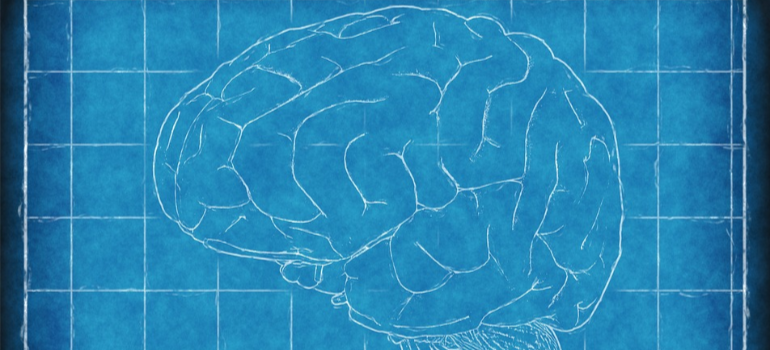Cocaine abuse is a pressing public health concern, carrying profound risks for individuals and society alike. As such, comprehending the psychological and environmental factors that contribute to this pervasive issue is imperative. By examining both types of factors contributing to cocaine abuse, we gain valuable insights into its complexity and detrimental effects.
At Harmony Ridge Recovery Center WV, we have offered comprehensive cocaine addiction treatment services to our communities for years. We deeply grasp the gravity of addiction and strive to pave the way for more targeted prevention and intervention strategies.
As such, this exploration seeks to shed light on the multifaceted nature of this problem and help outline possible solutions. Join us today as we unravel the intricate web of factors contributing to cocaine abuse.
Psychological Factors Contributing to Cocaine Abuse
Initially, as with all substance use disorders (SUDs), cocaine abuse and addiction do stem from psychological factors. For this type, we identify the following three main ones that bear noting:
- Mental health conditions
- Impulsivity
- Co-occurring substance abuse disorders
Underlying Mental Health Conditions
First, underlying mental health conditions share significant overlap with addiction and SUDs. NIDA notes that co-occurring mental health disorders and SUDs are very common and dubs this phenomenon “dual diagnosis.”
Dual diagnosis commonly involves conditions such as depression, anxiety disorders, bipolar disorder, and attention-deficit hyperactivity disorder (ADHD). The co-occurrence of these mental health conditions and cocaine addiction often intensifies the severity and complexity of both disorders. Individuals with untreated or undiagnosed mental health conditions may turn to cocaine as a means of self-medication, attempting to alleviate their distressing symptoms. Unfortunately, cocaine’s short-term euphoric effects can provide temporary relief from emotional pain, reinforcing the cycle of drug abuse.

Moreover, cocaine abuse can exacerbate mental health symptoms, leading to a vicious cycle of addiction and worsening psychological distress. This reciprocal relationship between mental health conditions and cocaine addiction creates a self-perpetuating cycle that further complicates treatment efforts.
To address the underlying causes of cocaine abuse effectively, it is crucial to recognize and treat co-occurring mental health disorders. Neglecting to treat both conditions simultaneously can only impede recovery and contribute to relapse. By understanding the intricate interplay between mental health conditions and cocaine addiction, healthcare providers can develop comprehensive treatment approaches that address both aspects, promoting lasting recovery and improved well-being.
Impulsivity and Sensation-Seeking Behavior
In addition, impulsivity and sensation-seeking behavior are key factors contributing to cocaine abuse. Individuals with these characteristics are more prone to engage in risky behaviors and seek immediate gratification, making them vulnerable to the allure of cocaine’s intense euphoria.
Impulsivity, characterized by a lack of self-control and a tendency to act on impulses, can lead individuals to experiment with cocaine without fully considering the consequences. Similarly, sensation seekers, who crave novel and thrilling experiences, may be drawn to the intense stimulant effects of cocaine.
The combination of impulsivity and sensation-seeking behavior creates a potent risk factor for the development and perpetuation of cocaine addiction. Negative behavioral patterns fuel such behaviors and cement addiction alongside any possible mental health disorders.
Behavioral health and behavioral therapies play a crucial role in addressing impulsivity and sensation-seeking behavior as they target the underlying psychological mechanisms driving addictive behaviors. These interventions focus on developing coping strategies, improving self-regulation, and fostering healthier decision-making skills. Such behavioral therapy types as Cognitive behavioral Therapy (CBT) thankfully also contribute to treatment. The integration of behavioral therapies into addiction treatment programs, such as a CBT treatment plan for substance abuse, is essential for achieving long-term recovery and reducing the likelihood of relapse.

Co-Occurring Substance Use Disorders
Lastly, co-occurring substance use disorders are also among the most notable factors contributing to cocaine abuse. This connection is exemplified by the phenomenon of polydrug use, where individuals engage in the simultaneous misuse of multiple substances.
Indeed, research finds co-occurring substance use disorders quite common. In such cases, individuals with one addiction are more susceptible to developing dependencies on other substances, including cocaine. Polydrug use intensifies the risks and complications associated with cocaine abuse, leading to a synergistic effect that can rapidly escalate addiction. The use of other substances alongside cocaine can heighten its pleasurable effects or help alleviate the adverse effects of withdrawal, reinforcing the cycle of addiction.
Furthermore, certain substances, such as alcohol or opioids, can lower inhibitions and impair judgment, increasing the likelihood of cocaine use. Cocaine rehab WV providers increasingly encounter cases of polydrug use, as have we over the years. Co-occurring substance use disorders create a complex interplay of neurochemical, psychological, and social factors, contributing to the development of addiction.
Understandably, recognizing the prevalence and impact of co-occurring substance use disorders is essential in providing comprehensive treatment approaches. Integrated interventions that target multiple substance dependencies and address underlying psychological issues are crucial for a successful recovery from polydrug use.
Environmental Factors Contributing to Cocaine Abuse
With psychological factors in order, here we should also explore environmental factors contributing to cocaine abuse. These do overlap with psychological factors in some cases but also present a unique type of factor to examine. They include:
- Peer pressure and social media
- Childhood adversity and trauma
- Socioeconomic factors
Peer Influence and Social Networks
First, peer influence and social networks have a profound impact on kindling cocaine addiction. Peer influence often drives addiction, particularly for substances like marijuana and alcohol, and can extend to cocaine as well.
Individuals battling the disease of addiction are highly susceptible to the influence of their peers. Within social networks that endorse or engage in substance abuse, the normalization of drug use can further perpetuate cocaine addiction. Even if one has not yet developed an addiction, the desire to fit in or be accepted can lead to experimentation and eventual addiction.

Moreover, social networks may discourage or prevent rehabilitation by reinforcing patterns of substance abuse through shared experiences, enabling behaviors, or by stigmatizing recovery efforts. The fear of social isolation or rejection can make it challenging for individuals to break free from cocaine addiction, as the social environment becomes a significant barrier to seeking help and maintaining sobriety.
As such, addiction treatment providers need to tackle this factor’s impact directly. By fostering supportive, drug-free social networks and providing education on the risks of cocaine abuse, individuals can be empowered to make healthier choices. Additionally, interventions that address social pressures and promote social connections within a recovery-oriented community can mitigate the influence of peers and facilitate successful rehabilitation.
Childhood Adversity and Trauma
In addition, childhood adversity and trauma also present factors contributing to cocaine abuse and addiction. This type of factor does overlap with psychological challenges but remains environmental as it emerges in family circles before adulthood.
Experiences of adversity, such as physical or sexual abuse, neglect, or witnessing violence, can profoundly impact a child’s development and increase the risk of addiction later in life. Adverse childhood experiences disrupt healthy brain development, impair emotion regulation, and heighten stress response systems, making individuals more vulnerable to substance abuse as a means of coping with the lingering effects of trauma.
Moreover, childhood adversity can cause mental health disorders, such as post-traumatic stress disorder (PTSD), depression, or anxiety, creating a dual diagnosis scenario. The co-occurrence of trauma-related mental health conditions and cocaine addiction further exacerbates the severity and complexity of both disorders, perpetuating a self-destructive cycle.
In turn, in adolescence and adulthood, individuals may turn to cocaine as a way to self-medicate. Doing so will often serve as an attempt to numb the emotional pain associated with their traumatic experiences. These scenarios, understandably, tend to require holistic therapy for addiction to treat properly and ensure long-term recovery.

Understanding the strong connection between childhood adversity, trauma, and cocaine addiction is essential in providing effective interventions and support. Comprehensive treatment approaches should address both the underlying trauma and the addictive behaviors, recognizing the intricate interplay between the two. By incorporating trauma-informed care, therapy modalities that target trauma processing and resiliency, and addressing the unique needs of individuals with dual diagnosis, we can offer hope and healing to those grappling with cocaine abuse.
Socioeconomic Factors
Last but not least come the practical factors contributing to cocaine abuse, in the sense that they may hinder treatment. Socioeconomic factors have thankfully received more attention in recent years, and rightly so, given their substantive role.
Indeed, socioeconomic factors play a crucial role in kindling cocaine addiction. Economic disparities, poverty, and limited access to resources can significantly inform the likelihood of sustained addiction. Individuals facing socioeconomic challenges may also experience high levels of stress, lack social support systems, and encounter environments where substance abuse is prevalent. Financial instability can lead to feelings of hopelessness and desperation, increasing the appeal of cocaine as a means of escape or self-medication.
Furthermore, limited access to healthcare, including addiction therapy options, further exacerbates the problem. Without adequate resources, individuals may find it difficult to seek help, receive proper diagnoses, or access evidence-based treatments for their addiction. Effectively, socioeconomic factors create barriers to recovery, perpetuating the cycle of cocaine abuse.
As such, recognizing the impact of socioeconomic disparities is essential in implementing effective interventions. Addressing systemic inequalities and providing equal opportunities for education, employment, and social mobility is crucial in preventing and addressing the socioeconomic factors that contribute to cocaine abuse. Providing accessible and affordable treatment options, along with comprehensive social support services, can make a tremendous difference in the ability of individuals to seek and sustain recovery.

Interplay of Psychological and Environmental Factors Contributing to Cocaine Abuse
With the above in mind, we should also strongly stress that the two types do not exist in a vacuum. Rather, they demonstrate an intricate interplay that necessitates more extensive and thorough solutions.
The biopsychosocial model of addiction illustrates this interplay well, as it recognizes that addiction is determined by biological factors as well as psychological and social elements:
- Environmental factors include social influences, availability of drugs, exposure to trauma or adversity, and socioeconomic circumstances. The environment in which individuals live can directly influence their likelihood of engaging in substance abuse, as well as their ability to access treatment and support. Family stability and support are also paramount, which often necessitates family therapy for addiction.
- Psychological factors encompass individual traits, such as impulsivity, sensation-seeking behavior, and the presence of underlying mental health conditions. These factors can contribute to a heightened vulnerability to cocaine abuse.
- Biological factors include genes, age and stage of development, and even gender or ethnicity. NIDA reports that “genes, including the effects environmental factors have on a person’s gene expression, called epigenetics, account for between 40 and 60 percent of a person’s risk of addiction. Also, teens and people with mental disorders are at greater risk of drug use and addiction than others.”
In turn, the interplay among these factors can significantly inform addiction rates and recovery outcomes. This is why understanding the complex interplay between these factors enables the development of tailored interventions that address the root causes and promote long-lasting recovery.

Prevention and Education
Since factors contributing to cocaine abuse are so expansive and often deeply ingrained, prevention often presents the safest measure. Reducing addiction rates is of paramount importance in combatting addiction throughout the nation. Comprehensive prevention and education efforts toward this end should involve collaboration among healthcare providers, educators, policymakers, and community leaders.
Initially, early intervention in addiction treatment is crucial, as it allows for timely identification and support for individuals at risk. Individual therapy for addiction is the first modality employed in residential programs, and it does work better in earlier stages. The longer addiction is left to take hold, the harder it becomes to address its underlying causes.
In addition, as NIDA noted above, young people seem more susceptible to addiction. As such, implementing prevention programs in schools and communities, educating youth about the risks of cocaine use, and fostering healthy coping strategies can equip them with the knowledge and skills to make informed decisions.
Moreover, providing mental health support is essential, as co-occurring mental health conditions significantly contribute to cocaine abuse. Integrated approaches that address both substance use disorders and mental health disorders promote comprehensive healing and reduce the likelihood of relapse.
Lastly, raising awareness of environmental risk factors is essential in prevention efforts. By understanding the social, economic, and cultural factors that contribute to cocaine abuse, communities can implement targeted interventions to address these issues effectively. This includes addressing poverty, providing access to resources, and fostering supportive environments that discourage substance abuse.

Intervention and Treatment Approaches
Finally, intervention and treatment approaches must specifically cater to the various factors contributing to cocaine abuse and their complex interplay. Isolated treatment approaches that only treat individual aspects of addiction have demonstrably less effectiveness.
- Integrated treatment for co-occurring disorders is of utmost importance, as many individuals with cocaine addiction also struggle with mental health conditions. By providing comprehensive care that simultaneously addresses substance use disorders and underlying mental health disorders, we can effectively address the prevalent phenomenon of dual diagnosis.
- Environmental interventions and mental health initiatives play a crucial role in the treatment process. Creating supportive environments that discourage substance abuse, addressing social and economic factors that contribute to addiction, and promoting mental health awareness and resources are vital steps in combating cocaine addiction.
- Establishing robust support systems is essential to help individuals on their recovery journey. This includes access to counseling, support groups, and community programs that provide encouragement and guidance.
- Combating the stigma associated with addiction is also paramount. By fostering empathy and understanding and promoting a compassionate approach, we can reduce barriers to seeking treatment and provide individuals with the support they need. Established practices like group therapy for addiction need to become destigmatized so that more individuals can feel comfortable seeking them.
Interventions and treatment approaches that encompass these elements contribute to a comprehensive and holistic approach to combating cocaine addiction. In understanding the deeper interplay at hand, they can help provide individuals with tools, support, and resources for lasting recovery.

Harmony Ridge Recovery Fighting Cocaine Addiction By Your Side
Understanding the psychological and environmental factors contributing to cocaine abuse is crucial in addressing this pressing issue. Cocaine addiction remains a pervasive problem influenced by a multitude of factors, including underlying mental health conditions, impulsivity, peer influence, childhood adversity, socioeconomic disparities, and more. Recognizing the significance of these factors and their impact on individuals is essential in developing effective prevention, intervention, and treatment approaches.
At Harmony Ridge Recovery, we have devoted ourselves to combatting addiction and freeing our communities from its grasp. By addressing the root causes of cocaine abuse, we believe we can help mitigate the risk factors and empower individuals. While no universal solutions exist, we believe that every step forward brings us one step closer to a brighter future.
If you would like to know more about us or our work and services, please feel free to contact us today. Our teams are always available and will be happy to assist you.



